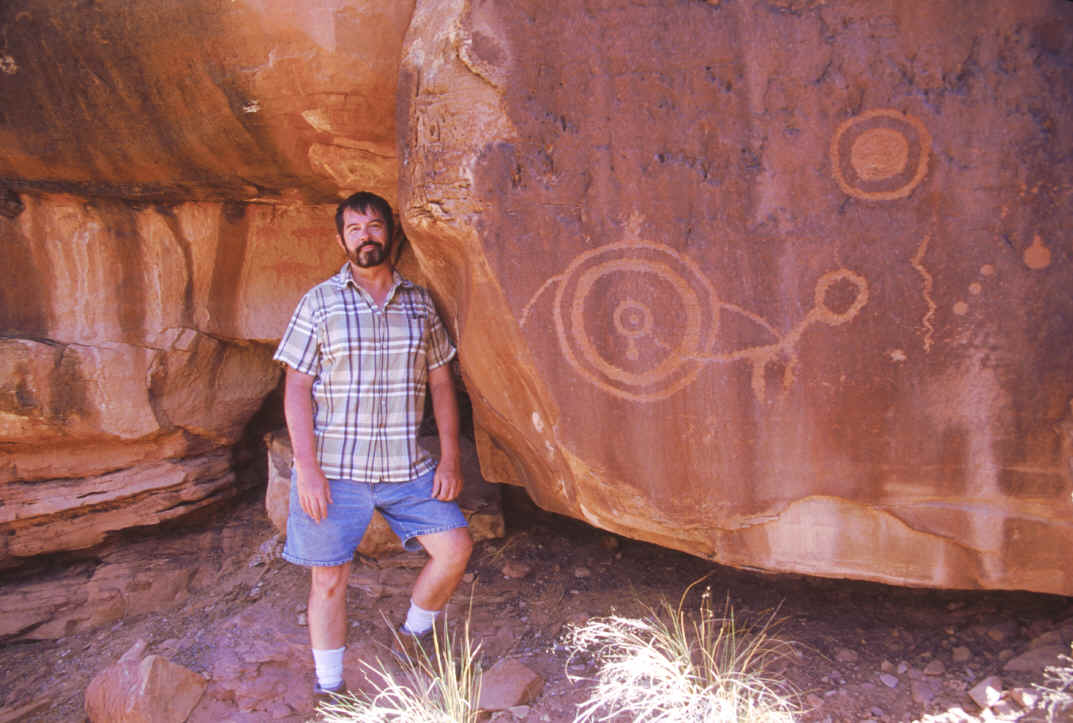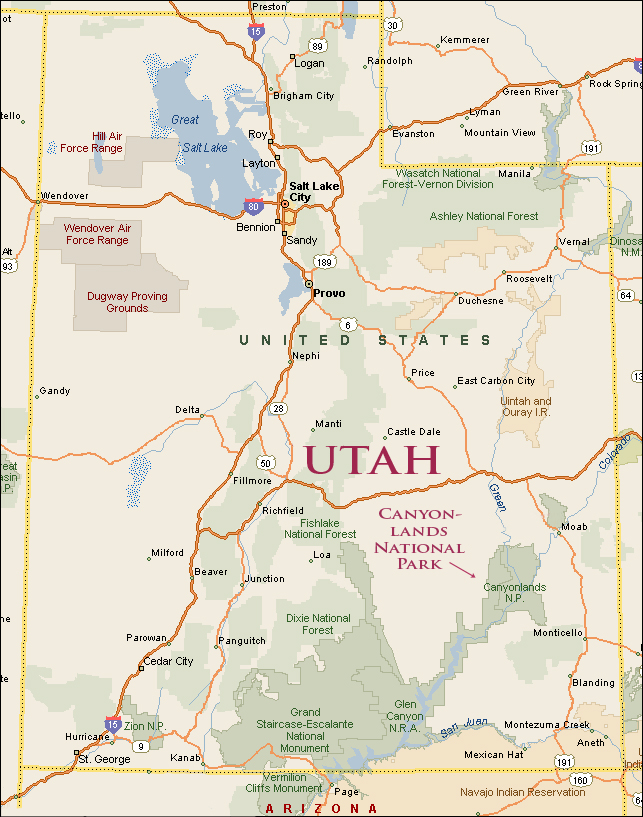

Canyonlands is just across the highway from Arches National Park, but it is a very different world. This is not a drive-through park, for easy tourism. Most of its abundant sights are only to be discovered after extensive and difficult 4-wheeling and backpacking. It is by far the biggest national park in Utah, and is the least developed, being deliberately left in a primitive state (the less development the better, in my opinion). These great canyons were formed by the Colorado and the Green Rivers, which meet and join near the center of the park. The canyons cover a wider area than the Grand Canyon in Arizona, though they are not as deep. Since the climate and geological layers are similar to those in nearby Arches, Canyonlands is prime arch-forming territory too. Some of the best areas for arch hunting are Lavender Canyon, Salt Creek, Davis Canyon, and Horse Canyon.

This is the beautiful
Castle Arch
in Canyonlands --
an extremely
delicate span.
This would be referred to
as a very mature arch,
since it
has probably
reached the extent of
its growth, and collapse
will be its next
step.
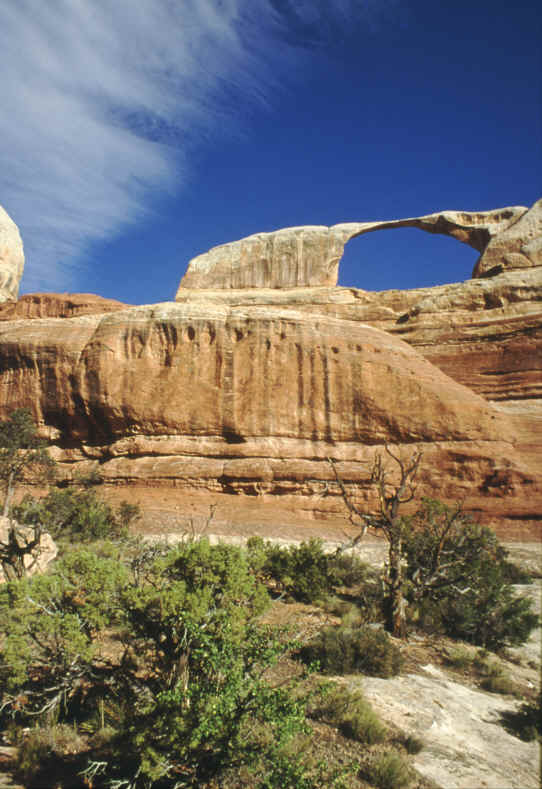
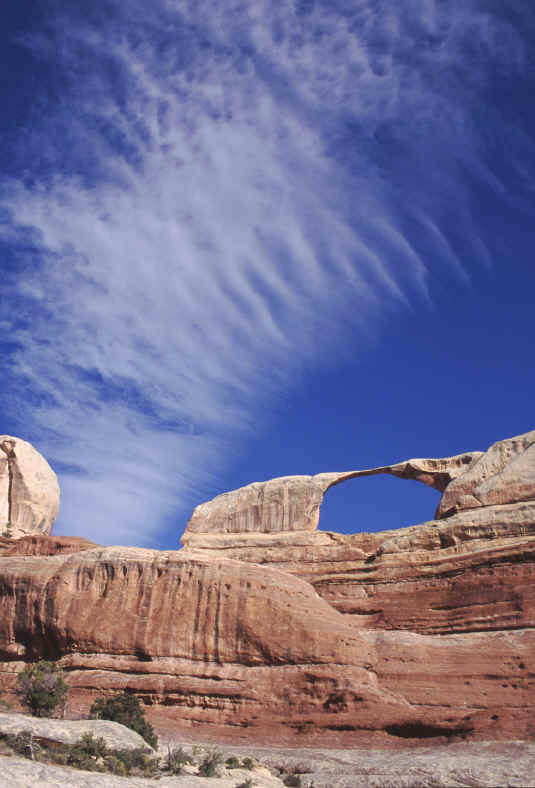
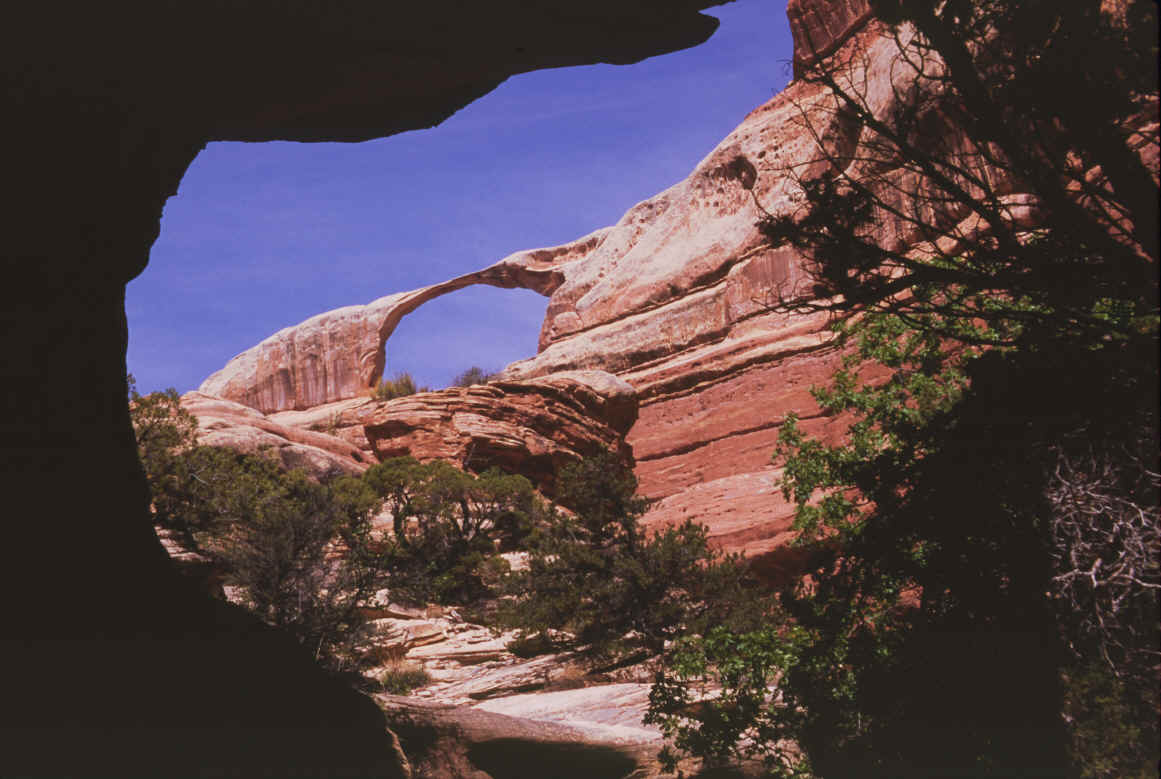
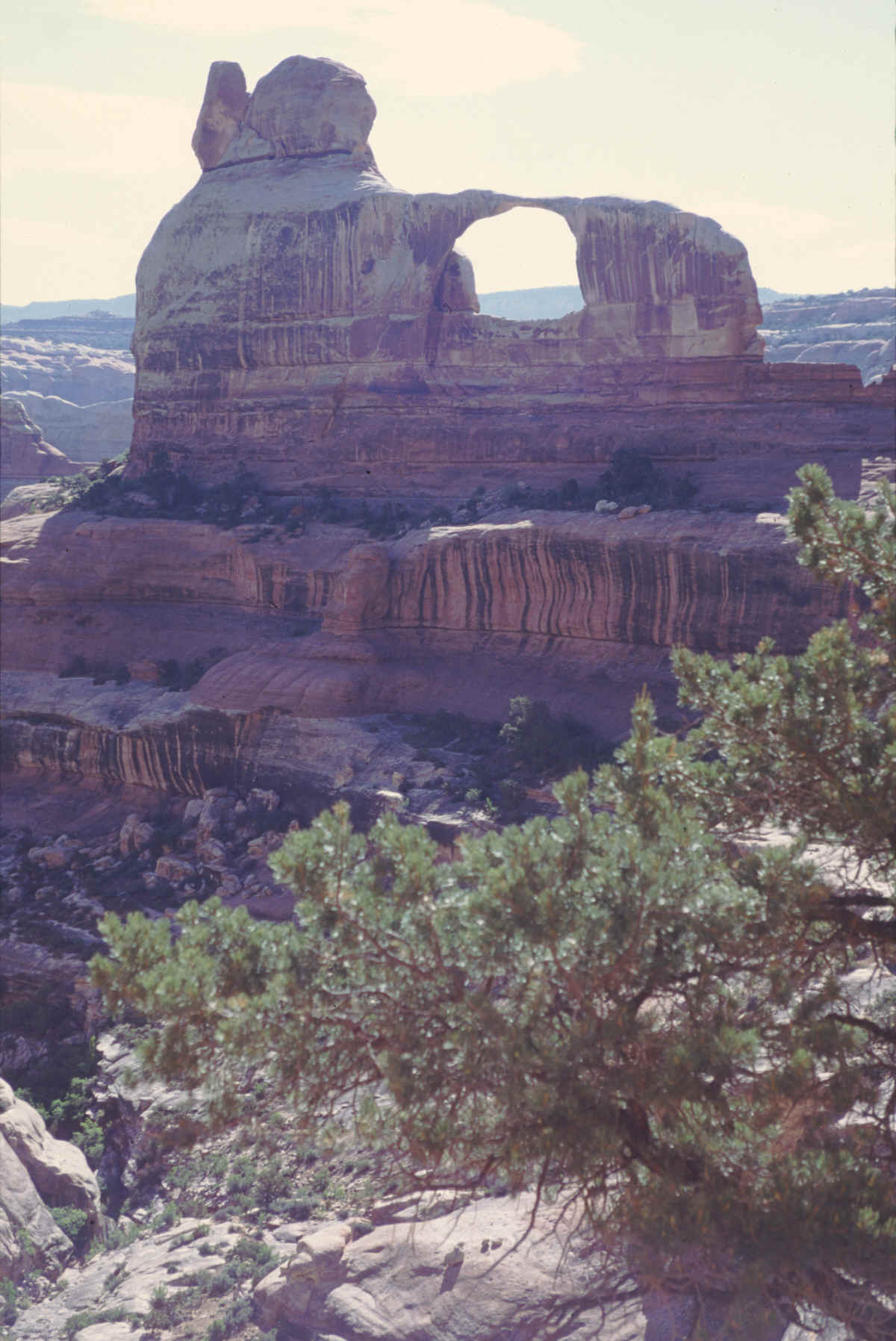 A rare shot of the backside of the Castle Arch -- few visitors ever get around
to this side.
A rare shot of the backside of the Castle Arch -- few visitors ever get around
to this side.
This is the most amazing thing about the Castle Arch... if you can get under it,
it proves to be even more delicate
than it looks... it is split horizontally!! So it is not just one thin
span... it is two very thin ones.

About a mile south of the Castle Arch is
the mighty Fortress Arch
of Canyonlands.
You would think it should be no problem to hike right on up into the opening,
but I never made it but partway up before I dead-ended at a cliff wall.
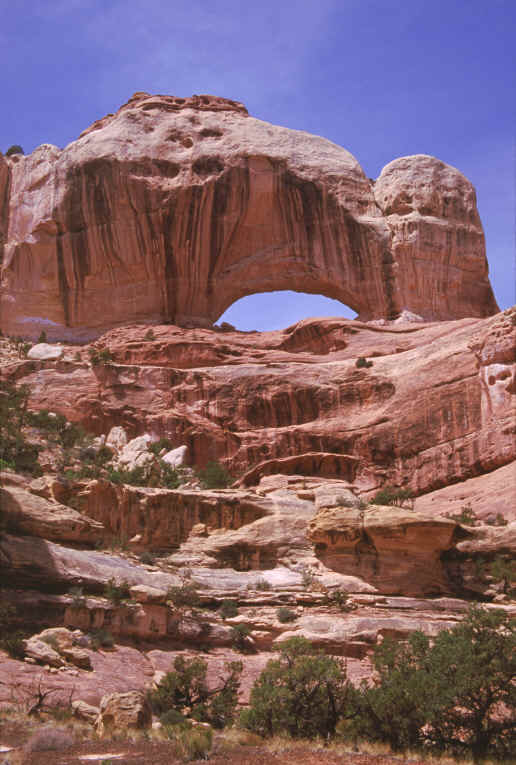
Angel Arch --
one of the world's greatest and most beautiful spans, and the largest in Canyonlands.
Even though the Angel Arch in Arch Canyon had the name first, it is even more
appropriate for this one. Notice the figure of the angel... wings, robe,
and bowed head. 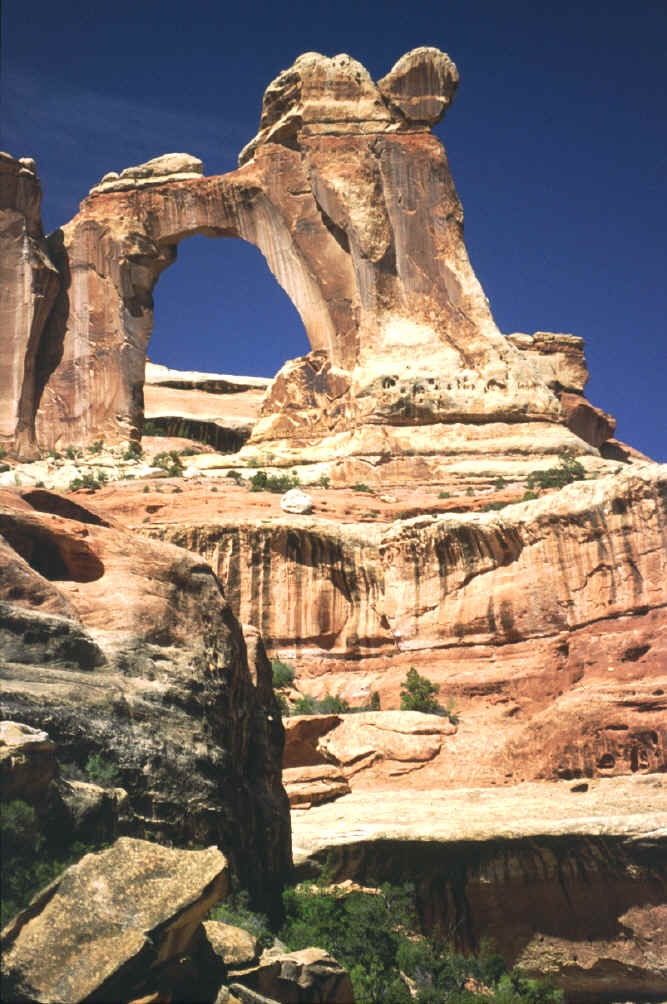
This is me going down Salt Creek to get to the Angel Arch -- IN it, for hours, with
water up to the doors. It was the first 4-wheeling I ever did, three days
after I got my brand
new truck. I learned a lot about what to do, and what not to do!

The famous Paul Bunyan's
Potty -- probably the world's largest pothole arch, which is an arch
formed when a hole develops in the roof of a shallow cave or alcove, and gets
larger and larger as rain erodes it through -- an overhead horizontal arch, in
other words.
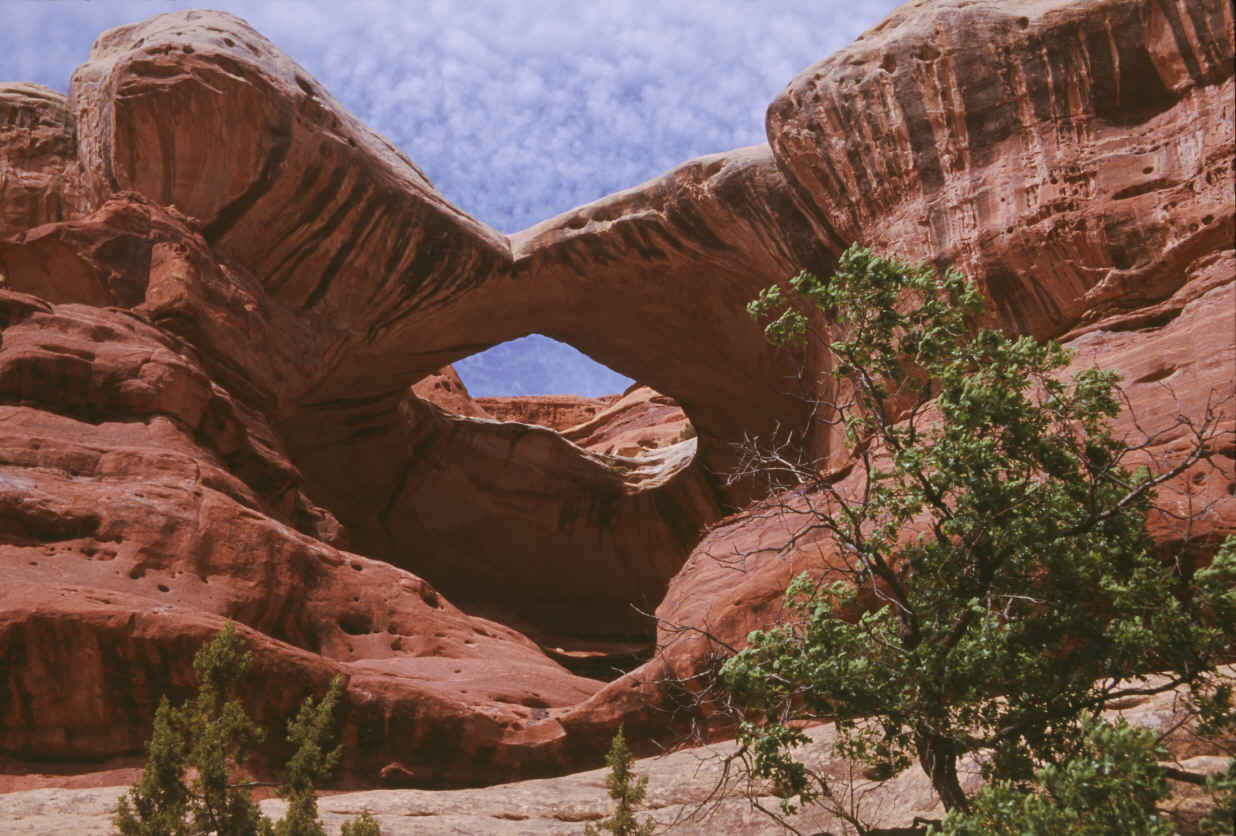
The Wooden Shoe Arch --
the opening in this charming arch is not very
remarkable, it's the shape of the rock surrounding it that gives it its name.

Long Arch in Davis Canyon (one of the southernmost
sections of Canyonlands).
Hardly anybody ever makes it up to see this one from this viewpoint above the
arch, though it is easily seen from the canyon far below. The climb up
from the canyon floor is a killer, no doubt the hardest day hike I ever
took. It involves climbing hand over hand, rock to rock, up a cliff which
is almost exactly the same height as the Empire State Building. And then
back down again of course, which is not really much easier; it's actually harder
on your legs. I left a bit of skin and blood on the rocks, and dodged a
snake too. Walking across the arch was more than a bit scary, but of course I had to
do it after going all the way up there.
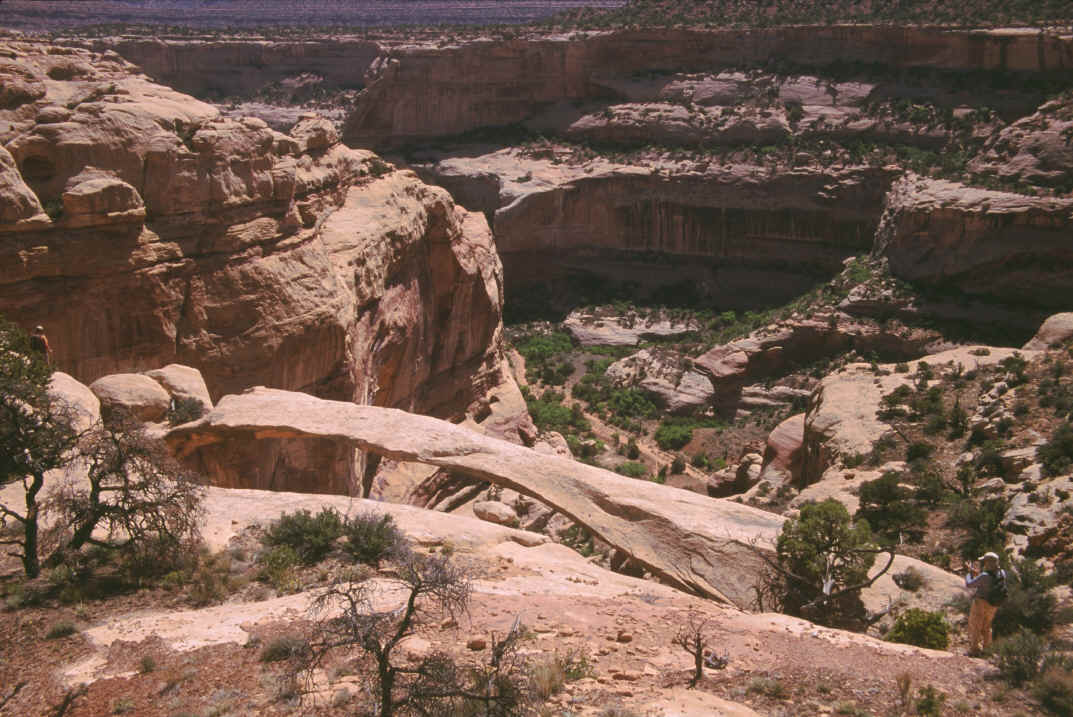

Cleft Arch in Lavender Canyon, a beautiful large canyon in southern Canyonlands with several fine arches. I had no idea it would be as large as it is, but it's huge. See the full-size tree below it for scale. And as you can see it has plenty of room to grow, with some rather thin rock to the left of the opening that can only keep eroding -- wish I could see it in 100,000 years.
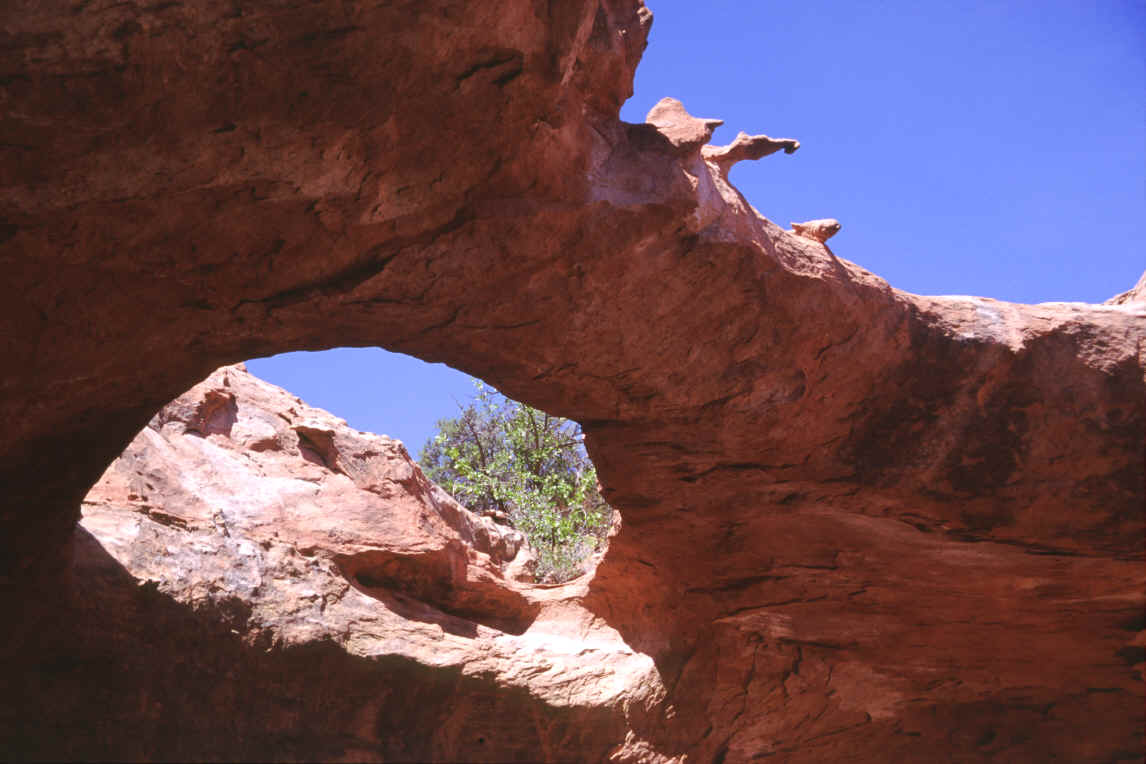 Gargoyle
Arch in Davis Canyon -- the only arch I've named,
because of that weird thing protruding from above. Seemed like an obvious
name to me, and others just picked it up from me. Actually Canyonlands is
no longer accepting names for its rock features, but arch fans like their arches
to have names, official or not, just so we can all keep track of what we're
talking about.
Gargoyle
Arch in Davis Canyon -- the only arch I've named,
because of that weird thing protruding from above. Seemed like an obvious
name to me, and others just picked it up from me. Actually Canyonlands is
no longer accepting names for its rock features, but arch fans like their arches
to have names, official or not, just so we can all keep track of what we're
talking about.
Indio Arch:
This is right alongside the main road into the national park and could be
easily seen by everybody if they knew it was there, but I didn't even know about
it until 2009 and I've been going to Canyonlands since the '80s. You can't
see sky through it from the road, it's one of those rather boring cliff-hugging
arches. But with a bit of bushwhacking (there's no trail) and using a
fallen tree to cross the stream, it's pretty easy to get close to.

There is a lot of ancient rock art in Canyonlands National
Park, done by the long-vanished Anasazi Indians. What
does it mean? Nobody knows.
Petroglyphs are carved into the rock. Pictographs are painted on.
You can see some faint red pictographs right behind me.